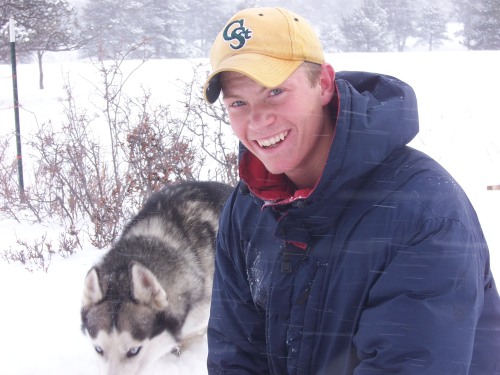Five Years Later: Remembering “One Mother’s Dream”

The night before my son died, I opened mail, standing in the kitchen. My boy sat at a round table, watching. Soup heated on the stove. I had worked all day, and needed to attend a class later that evening. He had stayed home from high school, sick with the flu. I opened a white envelope, and in it was an advance copy of Chicken Soup for the Christian Soul 2 containing a story I wrote, “One Mother’s Dream.” I said to Justin, “OH! Our story arrived!!!” A grin lit his face as he replied, “Let me see!” I looked at him, then asked, “Would you like me to read it out loud to you?” “Yes,” he said.
I opened the book, and began reading out loud. Occasionally I snuck a peek at him. His entire body emanated love.
I don’t have words to describe the experience–best I can find right now is as if compassion and grace pulsed between us, expanding floor to ceiling, wall to wall. When I finished, I looked at him and said, “Justin, I love you. I’m so glad you are my son.” He replied, “I love you, Mom.”
Later, when I came home from my class, he was asleep. I looked into his bedroom, pausing. His sixteen year old boy body was buried in flannel sheets and a lumpy down comforter encased by a denim duvet cover I’d sewed for him years earlier.
The next day was a Tuesday. I had to go to my office in Denver, an hour away.
Justin asked to stay home from school, said he was sick. His head was warm. I dampened a washcloth, adding a few drops of lavender essential oil. I held my hands on his forehead, softly saying, “I’ll stay home honey.” He said, “No Mom, I’ll be okay. You go.”
I left barely in time to make an 11:30 lunch meeting. I’d put the telephone near him, already dialed his Dad’s office so all he had to do was press redial if he needed anything. I told him I wouldn’t call, in case he was asleep. I asked him to call me when he woke up.
By 2:30 when I hadn’t heard from Justin, and he wasn’t answering the telephone, an eerie, icy coldness gripped me. I couldn’t explain it–a slight panic grew in me. I called my husband, Jim, asking if he’d heard from Justin. He said, “no.” I asked him to go home and check on him. I insisted. He was at work too–but he was only twenty minutes away from home. I knew if he couldn’t, I would drive home from Denver to Fort Collins. “It’s really important, please,” I said. Jim promised he would. I hung up the phone, wrapped a few things up, and left the office to cross West 32nd Avenue to get a double espresso before a few more hours of meetings.
In the middle of the street, my cell phone rang. Answering quickly, I listened to my husband carefully speak five words: “Justin has taken his life.”
I stumbled toward the sidewalk, beginning to moan, “No, no, no.” I needed to stop time. Questions erupted in me: Why? How? What if…? If only…? Suddenly I stopped. A very deep part of me began to ask, What am I going to do with this?
I didn’t want this, wouldn’t choose it, but from a faraway place, I knew I would have a choice to make. Blessed shock began to flood my veins, numbing me to full comprehension of the nightmare beginning to unfold. My life had already borne witness to God’s transformative grace in difficult circumstances. I could only hope that this would be no exception.
Five years have passed. It is 2011. I now live in Alaska, with my two dogs. The anniversary is 24 January. But my body remembers a Tuesday. And then that Wednesday, and days following. Memories return more frequently now–from days and years prior to 2006. I smile and laugh often, even as grieving roars through me, taking me by surprise. I’m not sure how a forty-eight year old woman can cry and moan in agony, knees to gut. It is a wave I ride. It comes less often now, and resembles a shorebreak wave. Harsh and powerful. However, I’ve learned to stay with the current, the flow. I’m not afraid I will drown. I’m grateful for salty tears, and my son’s life.
I suspect that if he could, Justin would rock me now–like I did him when he was a boy. In truth, he often does–through dreams, signs, jokes, nature, my writing, and in conversations with people who share stories. Death is a part of life, and life is part of death. Perhaps life is a sacred circle, and the circumference is love. I’m grateful for God, for family, for friends, and for strangers. Most of all, I’m grateful for my son. I’d chose him again, again, and again.
This is a link to the story, “One Mother’s Dream.” It’s my story of becoming a foster adoptive mother, Justin’s mother. It’s also Justin’s story of a forever family.
I love you my son. I’ll be okay. I know you can hear me, too.






